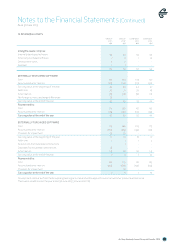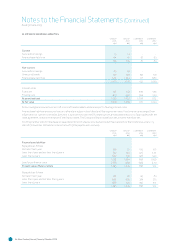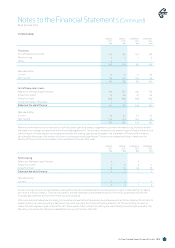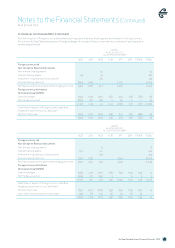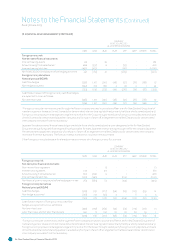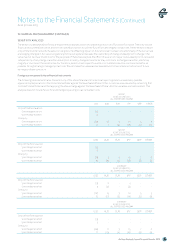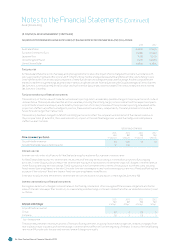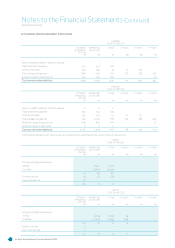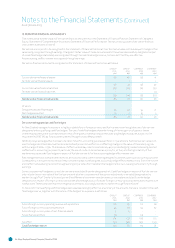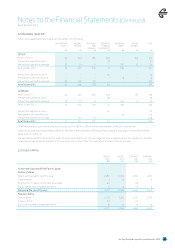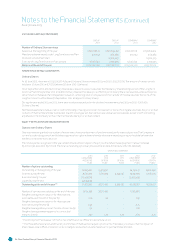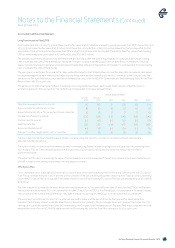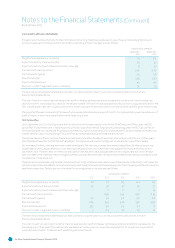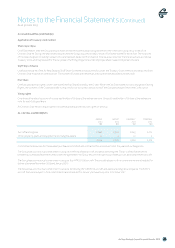Air New Zealand 2013 Annual Report Download - page 35
Download and view the complete annual report
Please find page 35 of the 2013 Air New Zealand annual report below. You can navigate through the pages in the report by either clicking on the pages listed below, or by using the keyword search tool below to find specific information within the annual report.
Air New Zealand Annual Financial Results 33
. FINANCIAL RISK MANAGEMENT CONTINUED
Equity price risk
Equity price risk is the risk of loss to Air New Zealand arising from adverse fluctuations in the price of an equity investment or
equity derivative.
Air New Zealand has exposure to equity price risk arising on the equity investment and derivative held in Virgin Australia Holdings Limited.
This investment is held for strategic rather than trading purposes. The Group does not hedge this risk.
Equity investment price risk sensitivity on financial instruments
The sensitivity to reasonably possible changes in the quoted price of an equity investment or derivative with all other variables held
constant, is set out below.
Equity investment price change:
M
M
M
M
On profit before taxation
Group 11 (11) 4(4)
Company - - 4 (4)
On investment revaluation reserve (within equity)
Group
65 (65) 51 (51)
LIQUIDITY RISK
Liquidity risk is the risk that the Group will be unable to meet its obligations as they fall due. Air New Zealand manages the risk by targeting
a minimum liquidity level, ensuring long term commitments are managed with respect to forecast available cash inflow and managing
maturity profiles. Air New Zealand holds significant cash reserves to enable it to meet its liabilities as they fall due and to sustain
operations in the event of unanticipated external factors or event.
The following table sets out the contractual, undiscounted cash flows for non-derivative financial liabilities:
GROUP
AS AT JUNE
STATEMENT
OF FINANCIAL
POSITION
M
CONTRACTUAL
CASH FLOWS
M
YEAR
M
YEARS
M
YEARS
M
YEARS
M
Bank overdra and short-term borrowings
- - - - - -
Trade and other payables 382 382 382 - - -
Secured borrowings 84 88 16 17 51 4
Unsecured bonds 150 186 10 10 166 -
Finance lease obligations 1,395 1,553 169 188 554 642
Total non-derivative liabilities 2,011 2,209 577 215 771 646
GROUP
AS AT JUNE
STATEMENT
OF FINANCIAL
POSITION
M
CONTRACTUAL
CASH FLOWS
M
YEAR
M
YEARS
M
YEARS
M
YEARS
M
Bank overdra and short-term borrowings 2 2 2 - - -
Trade and other payables 373 373 373 - - -
Secured borrowings 97 104 16 16 55 17
Unsecured bonds 150 197 10 10 177 -
Finance lease obligations 1,445 1,634 171 162 563 738
Amounts owing to associates 6 6 6 - - -
Total non-derivative liabilities 2,073 2,316 578 188 795 755
Notes to the Financial Statements (Continued)
As at 30 June 2013


